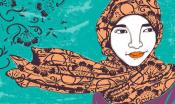professional development
10 Tips for Starting a World Religions Curriculum
How to develop a world religions curriculum with inclusion and sensitivity.
August 6, 2009


Women’s Equality Day commemorates the ratification of the 19th Amendment on Aug. 26, 1920. It’s important to remember that many Black women and more women of color didn’t earn the right to vote until years later. Read Sojourner Truth’s “Ain’t I a Woman?” with its intersectional message delivered during her 1851 speech at the Women’s Rights Convention in Akron, Ohio. Also, check out an LFJ lesson featuring an accurate voting rights timeline, and identify ways to take a deeper look at women’s history this Women’s Equality Day—and beyond.